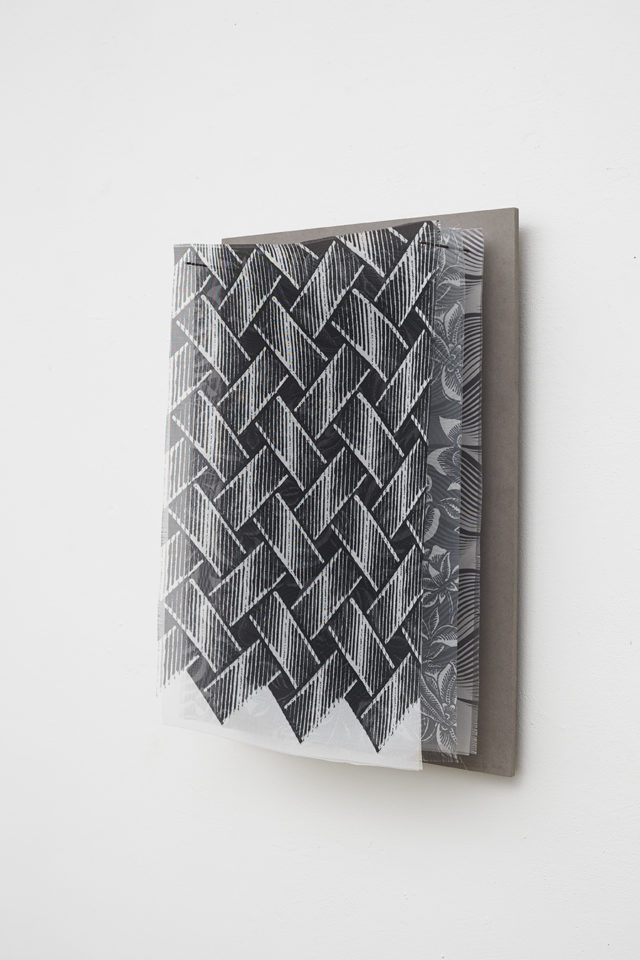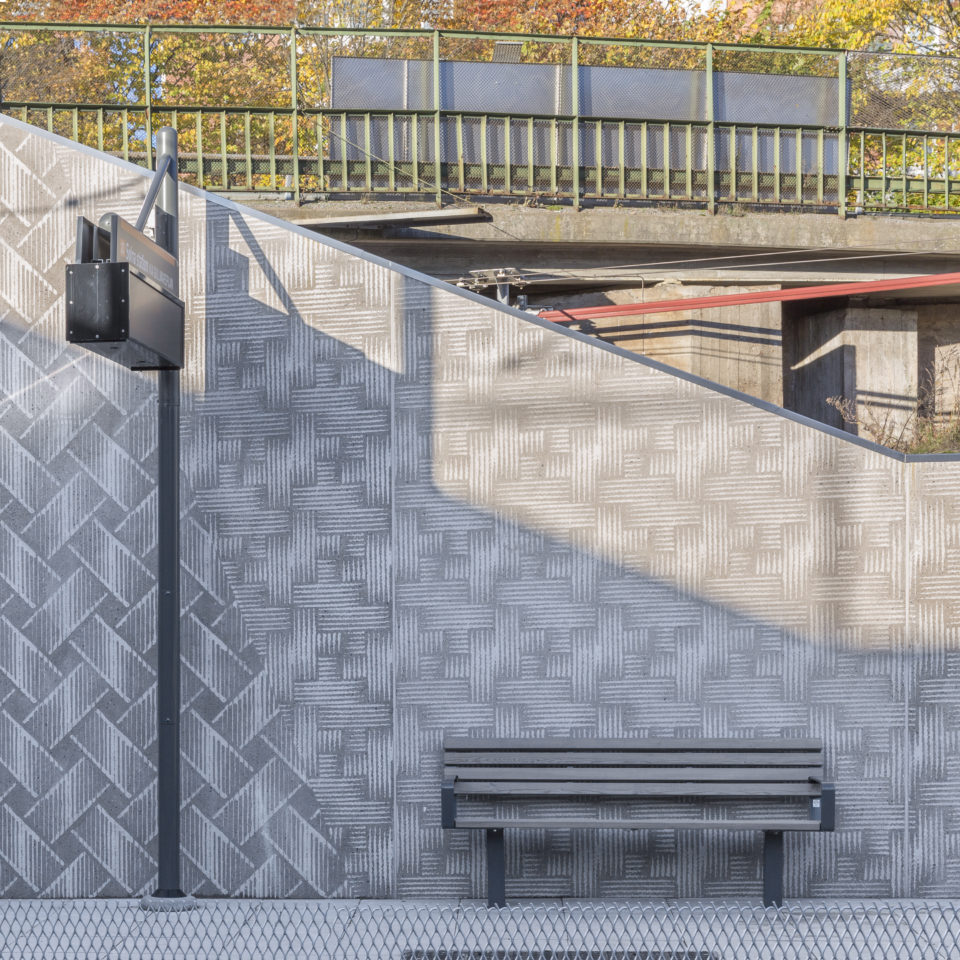Elsa Chartin
—Elsa Chartin explores the potential for pattern to convey narratives; layering histories, craft traditions and techniques. This project – “Trans-parence/Super-position”, examines the reading of three reworked patterns, from the beginning of the 18th, 19th and 20th centuries. Transparency, layers and visual transitions have been sublimated onto among other things, polyester fabric from printing frames.
One of the patterns bears the story of the 18th century block-printed Kattun pattern. Flower-patterned cotton fabrics imported from India / Persia by Armenians to the south of France and established in Sweden by immigrant German Jews. The second pattern is a reworked version of “Hoyle´s Wave” – optical waves that are said to have arisen by mistake in 1820, due to a misfed roll in a printing press in the English factory Messrs. Simpson & Co of Foxhillbank. The third is a pattern showing braiding that, in the early 20th century, was not uncommon in architecture, often cast or carved into stone. A trompe l´oeil where a pattern could make one think that the stone was soft and pliable.


